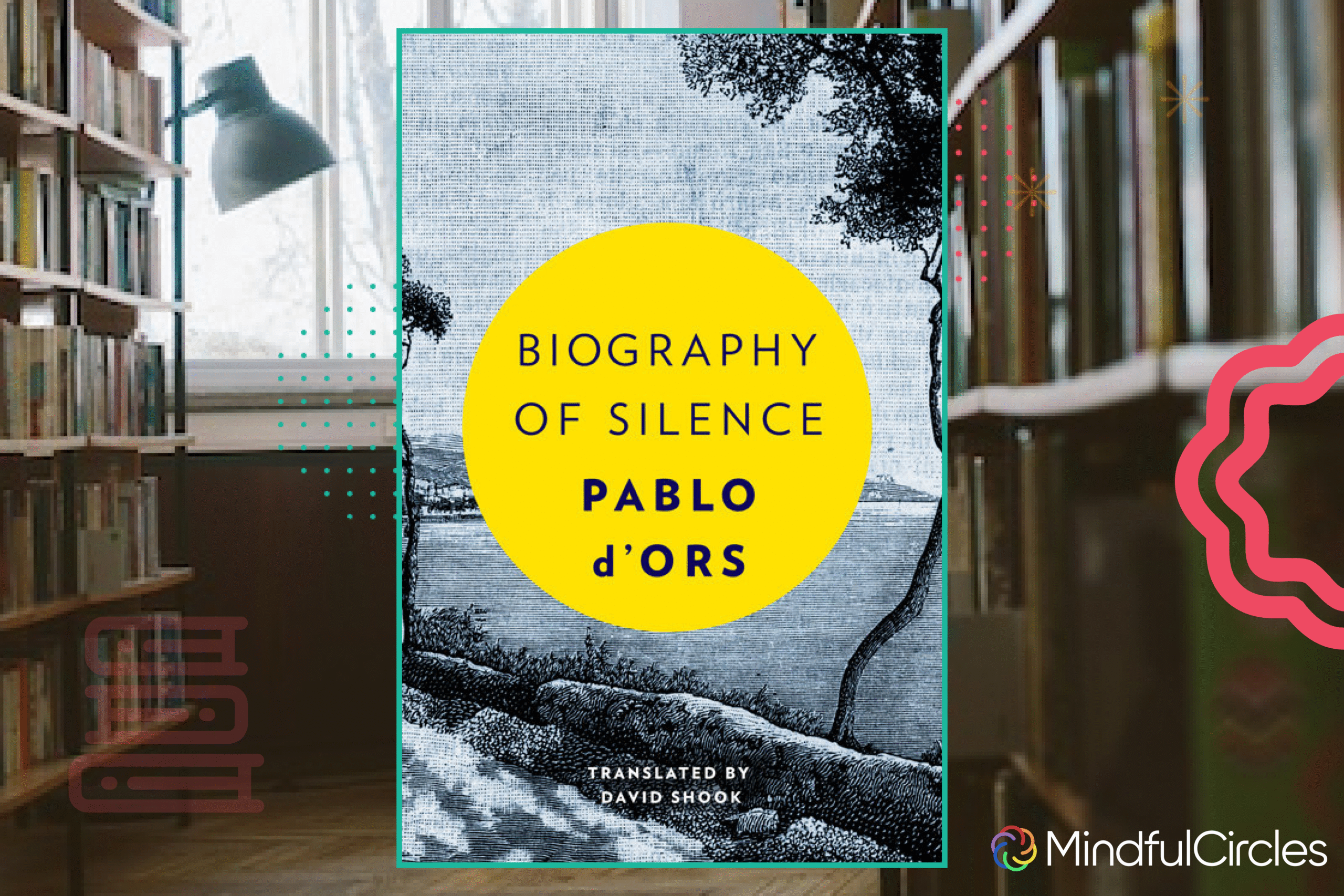A Biography of Silence: An Essay on Meditation
About the Author and the Book
Pablo d’Ors is a Spanish priest, writer, and spiritual teacher — and the grandson of the renowned philosopher Eugenio d’Ors. Trained in theology, literature, and spirituality, he is both a novelist and essayist, but it was A Biography of Silence (2012) that brought him international recognition.
The book, originally written in Spanish (Biografía del Silencio), became an unexpected literary phenomenon. It sold over 300,000 copies in Europe, was translated into multiple languages, and received acclaim from both religious and secular readers. It has been praised by contemplatives, monks, and psychotherapists alike for its disarming simplicity.
Unlike most meditation guides, A Biography of Silence isn’t instructional — it’s confessional and philosophical. D’Ors describes his inner journey of stillness over a decade of meditative practice, capturing both the tedium and the transcendence of silence.
Critics often compare its tone to Thomas Merton, Rainer Maria Rilke, and Christian mystics such as Meister Eckhart. Yet, it’s also profoundly modern — addressing the restlessness, distraction, and noise of contemporary life.
While some critics found it too introspective or “non-systematic,” most readers experienced it as a quiet revolution — a text that doesn’t teach meditation, but invites you into it.
“Silence is not the absence of noise, but the presence of everything.”
Part I — Discovering Silence
The first half of A Biography of Silence unfolds as a spiritual autobiography, tracing how d’Ors stumbled into silence and how it gradually restructured his perception of self and reality.
He opens with a confession: when he began meditating, he expected transcendence — but found boredom, frustration, and endless noise.
“In silence, I discovered not peace but restlessness. My own thoughts screamed louder than the world.”
D’Ors’s early experience mirrors what most modern seekers face — the confrontation with the monkey mind. He observes how our constant need for movement and productivity conceals a fear of simply being.
The Shock of Stillness
He explains that the first encounter with silence is rarely pleasant. Instead of calm, it exposes our inner chatter, insecurities, and obsessions.
“When we begin to be silent, we realize we are inhabited by a crowd.”
He calls this “the desert experience” — the uncomfortable stripping away of distractions. But this emptiness, he insists, is the true beginning of spiritual life.
Silence as a Mirror
D’Ors writes that silence works like a mirror: it reflects everything we try to hide.
“Silence is merciless. It shows you what you are.”
In his meditation practice, he finds that the more he resists his thoughts, the louder they become. Gradually, he learns acceptance — not fighting thoughts, but letting them rise and fall naturally.
This shift from control to surrender becomes the book’s core transformation.
The Noise of the Ego
He names the mind’s chatter “the noise of the ego.” It’s the constant narrative that says I must do, I must prove, I must achieve.
“The ego’s great fear is insignificance — but only when we accept our insignificance can we begin to see clearly.”
Meditation, then, is not an escape from the world but a death of self-importance. D’Ors describes it as “a slow dismantling of the false self.”
He recounts how, as a priest, he once equated prayer with asking — and meditation with doing. But in silence, he realized that both are acts of being:
“The greatest prayer is to listen.”
Learning to Dwell
As his practice deepens, d’Ors emphasizes the verb to dwell. To dwell in silence, to dwell in presence, to dwell in one’s own life.
“Meditation is not an activity but a posture. It is the art of dwelling — of abiding where we are, without fleeing.”
He sees that our culture worships speed, ambition, and novelty — and therefore silences itself. To stop is revolutionary.
D’Ors compares modern life to “a marketplace of voices shouting for attention,” and meditation as the act of stepping out of that market, even for ten minutes.
He confesses that, at first, silence made him feel useless. Only later did he discover that it was useful precisely because it was useless.
“Silence teaches us the sacred value of the unproductive.”
This first part ends with his realization that silence is not an absence, but a presence — the foundation of all creativity, clarity, and love.
“The one who is silent does not escape the world — he embraces it more deeply.”
Part II — Transformation Through Silence
As Pablo d’Ors moves deeper into his meditative journey, A Biography of Silence shifts from personal confession to quiet revelation.
What begins as an account of frustration and boredom becomes a meditation on presence, humility, and the art of seeing.
He writes early in this section:
“At first I thought silence would give me answers. Now I know it gives me space — and in that space, everything becomes answer enough.”
The Vanishing of the Ego
After years of sitting, d’Ors notices that his thoughts still come and go, but their authority fades.
“Thoughts no longer command me. They visit me, but I no longer serve them tea.”
This wry humor captures the book’s spirit — gentle, human, but profound.
He begins to experience a loosening of his identity: the incessant “I” narrative softens. He describes this as dying little deaths — not morbidly, but as liberation.
“To meditate is to practice dying — to release one’s ownership of everything, even one’s self.”
This echoes Buddhist insight yet remains grounded in a Christian contemplative tradition. D’Ors draws parallels to St. John of the Cross, where the dark night of the soul becomes a clearing, a preparation for clarity.
He insists:
“The ego does not disappear; it simply learns its place. It is no longer the king, but a servant.”
The disappearance of the ego is not a mystical abstraction — it manifests in daily life: less defensiveness, more listening, less fear of being misunderstood.
Time and the Eternal Present
As silence deepens, d’Ors becomes aware of the transformation of time itself.
“In silence, time loses its tyranny.”
He explains that modern people live either in nostalgia or anticipation, never here. Meditation draws attention back to the present moment, which he calls “the only time where reality exists.”
At first, this feels unbearable — the present is too plain, too uneventful. But over time, he discovers that the present is inexhaustible:
“The present moment, once entered fully, expands infinitely.”
He likens the meditative state to reading poetry — it slows perception until the world becomes transparent.
He writes:
“The more I am silent, the more time disappears. In its place appears eternity — not as endlessness, but as intensity.”
Silence as Compassion
D’Ors insists that true silence is not self-absorption. On the contrary, it awakens empathy.
As the ego dissolves, one feels less separate from others.
“The one who learns to listen to himself, listens to all beings.”
He notices that silence makes him more attuned to small gestures — a smile, a sigh, the tone of a voice. Compassion, he says, arises not from effort but from attention.
“To love is to pay attention — nothing more, nothing less.”
This insight bridges spiritual traditions: the mindful attention of Zen, the agapic love of Christianity, and the phenomenological openness of modern philosophy.
Silence, then, becomes not withdrawal but participation. It teaches intimacy without possession — to be with others without needing to change them.
“In silence, I learned that helping others is not doing something for them, but being truly with them.”
The Mundane and the Sacred
D’Ors gradually abandons the distinction between sacred and profane. He realizes that everything — washing dishes, walking, breathing — can be meditation if done with awareness.
“When you truly pay attention, every act becomes prayer.”
He criticizes both religious dogmatism and secular distraction as forms of avoidance — one hides behind doctrines, the other behind entertainment. Both resist direct contact with reality.
The silence he describes is not exotic; it’s woven into daily life. He speaks of sitting, breathing, and simply being present to the miracle of existing.
“I used to seek God in churches. Now I find Him in the pause between two breaths.”
This echoes Meister Eckhart’s teaching that the divine is born in the stillness of the soul.
Suffering and Surrender
Eventually, d’Ors confronts the inevitability of suffering. Meditation doesn’t eliminate pain — it transforms one’s relationship to it.
“Pain does not diminish in silence. It clarifies.”
He writes movingly about moments of loss and despair — how silence neither consoles nor explains, but accompanies.
In silence, suffering becomes shared — not because others take it away, but because the boundaries between self and world soften.
“Silence is the hand that holds your pain without judging it.”
He insists that surrender is not passivity. It is the courage to say yes to life as it is, without resistance.
“To accept is not to give up. It is to stop fighting against what already is.”
This acceptance, he says, is the essence of peace.
The Gift of Silence
In the final pages, d’Ors offers no grand conclusions — only a deep gratitude for what silence has taught him:
humility, presence, tenderness, and awe.
“Meditation is not an escape from life but an apprenticeship in being alive.”
He admits he is still a beginner, still distracted, still restless — but now sees those imperfections as part of the path.
“There is no perfection in silence, only the growing ability to welcome what comes.”
The book ends not with triumph, but with gentleness.
D’Ors offers silence as both refuge and revelation — the place where the soul becomes simple again.
“In silence, everything falls into place. Even what breaks, fits.”
Final Reflections on the Book
The Biography of Silence stands as a slender yet profound testament to the power of stillness in a hyperactive world.
Unlike most spiritual books, it doesn’t try to impress with knowledge — it invites the reader into experience.
D’Ors reminds us that silence is not a luxury or a technique; it is our natural state, the foundation of clarity, compassion, and meaning.
In its simplicity lies its strength.
“We don’t go into silence to escape the world. We go into silence to return to it reborn.”
The End
Reflection Question for the Circle
As you reflect on what we’ve read today, ask yourself:
“What part of this reading resonated most with where I am in life right now—and why?”
You’re welcome to share this in the Circle, or simply take a quiet moment to sit with it. If you are reading our blog online, simply leave a comment or connect with our community on social media.



